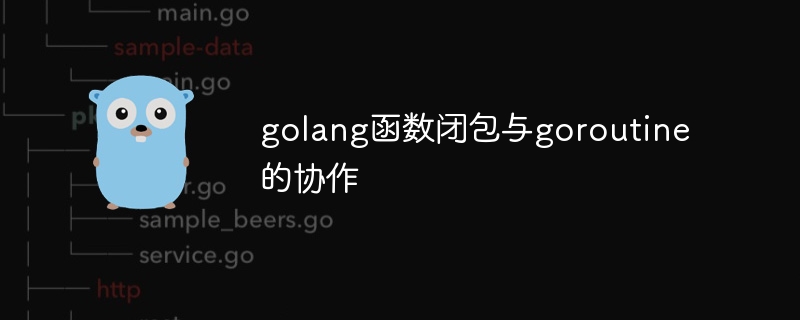Home >Backend Development >Golang >Collaboration between golang function closure and goroutine
Collaboration between golang function closure and goroutine
- PHPzOriginal
- 2024-04-23 15:00:02479browse
Function closures and Goroutines collaborate in the Go language to create concurrent, efficient programs: Function closures allow functions to access external variables even after the function has completed execution. Goroutine is a lightweight coroutine that can be executed in parallel. Use function closures with Goroutines to provide a powerful mechanism for concurrent execution. Example: Process array elements in parallel, create Goroutine through function closure, calculate the square of each element, and then accumulate the result through channels.

Collaboration of function closure and Goroutine in Go language
In Go language, function closure and Goroutine are two powerful elements. Can work together to create concurrent and efficient programs. This article explores how to use function closures and Goroutine collaboration to improve the performance and maintainability of your application.
Function closure
Function closure refers to a function that can access variables outside its definition scope. In Go, you can create a function closure by creating an anonymous function and storing it in a variable.
For example:
func createCounter() func() int {
count := 0
return func() int {
count++
return count
}
}The above function createCounter creates a function closure that returns an anonymous function. This anonymous function can access and modify the external variable count even after the createCounter function has completed.
Goroutine
Goroutine is a lightweight concurrent execution unit in the Go language. They are essentially coroutines and can be executed in parallel without blocking the main thread. Goroutines can be created using the go keyword.
For example:
go func() {
for i := 0; i < 10; i++ {
// 在 Goroutine 中执行的操作
}
}Using Goroutine with function closures can create a powerful mechanism for concurrent execution.
Practical Case
The following is a practical case showing the usage of function closure and Goroutine collaboration:
// 并行处理数组元素
func parallelSum(arr []int) int {
// 创建一个通道来接收各个 Goroutine 的结果
resCh := make(chan int)
// 遍历数组元素并为每个元素创建一个 Goroutine
for _, num := range arr {
go func(n int) {
// 计算元素的平方,并将其发送到通道
resCh <- n * n
}(num)
}
// 初始化 sum 变量并等待各个 Goroutine 完成
sum := 0
for i := 0; i < len(arr); i++ {
sum += <-resCh
}
// 返回平方元素的总和
return sum
}In the above example, parallelSum The function takes an array of integers and calculates the square of each element in parallel. Function closure is used to create a Goroutine that calculates the square of a single element and sends it to the channel. The main Goroutine waits for all Goroutines to complete and accumulates the results before returning the final sum.
By leveraging function closures and Goroutines, we can perform parallel calculations quickly and efficiently without blocking the main thread. This significantly improves code performance and responsiveness.
The above is the detailed content of Collaboration between golang function closure and goroutine. For more information, please follow other related articles on the PHP Chinese website!

